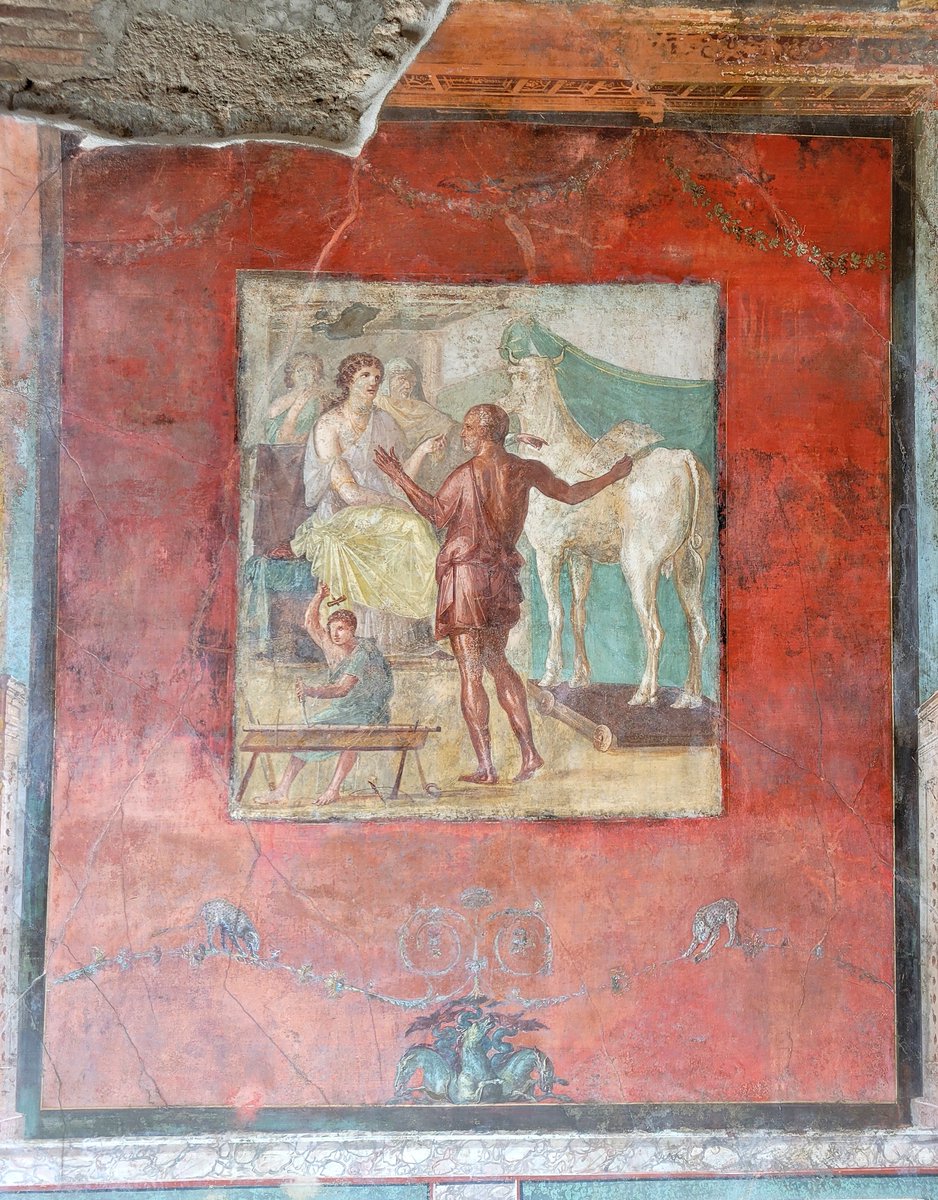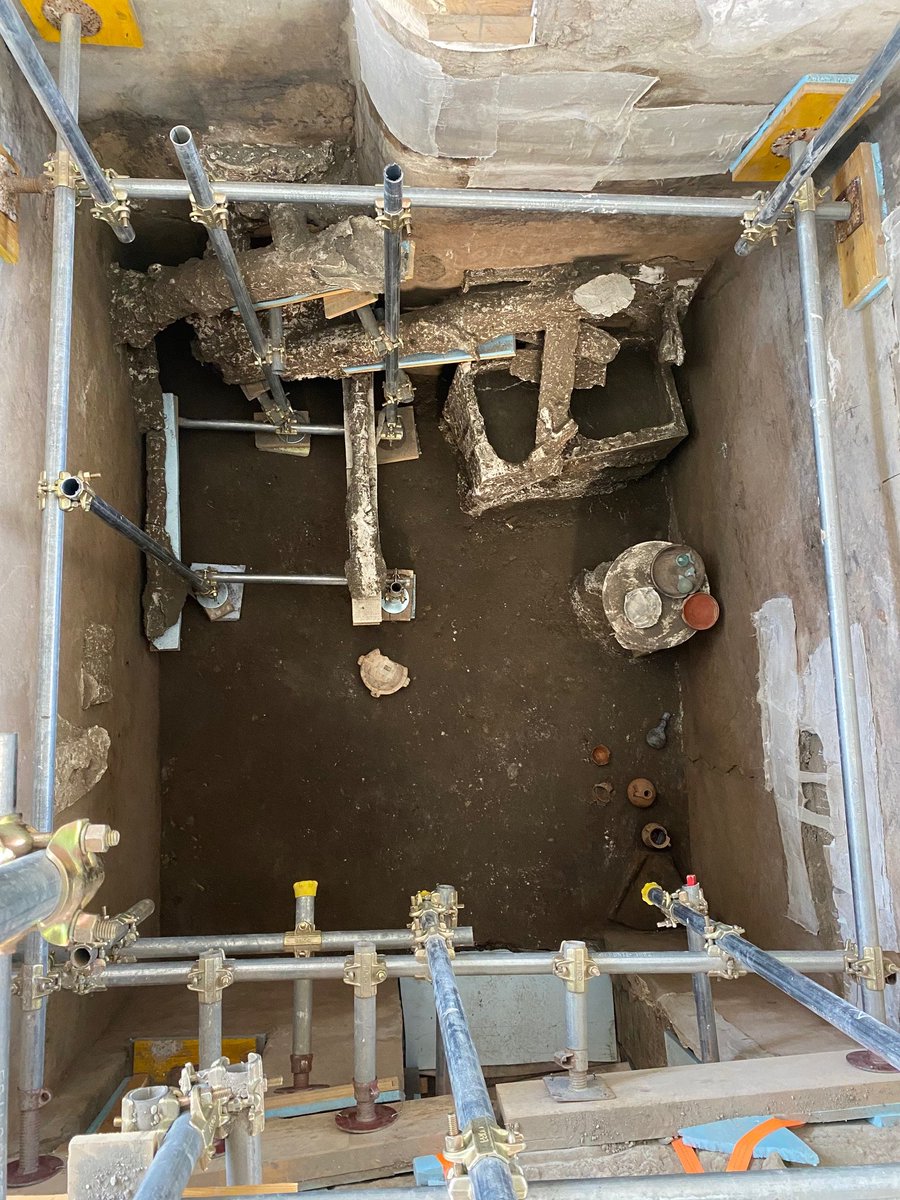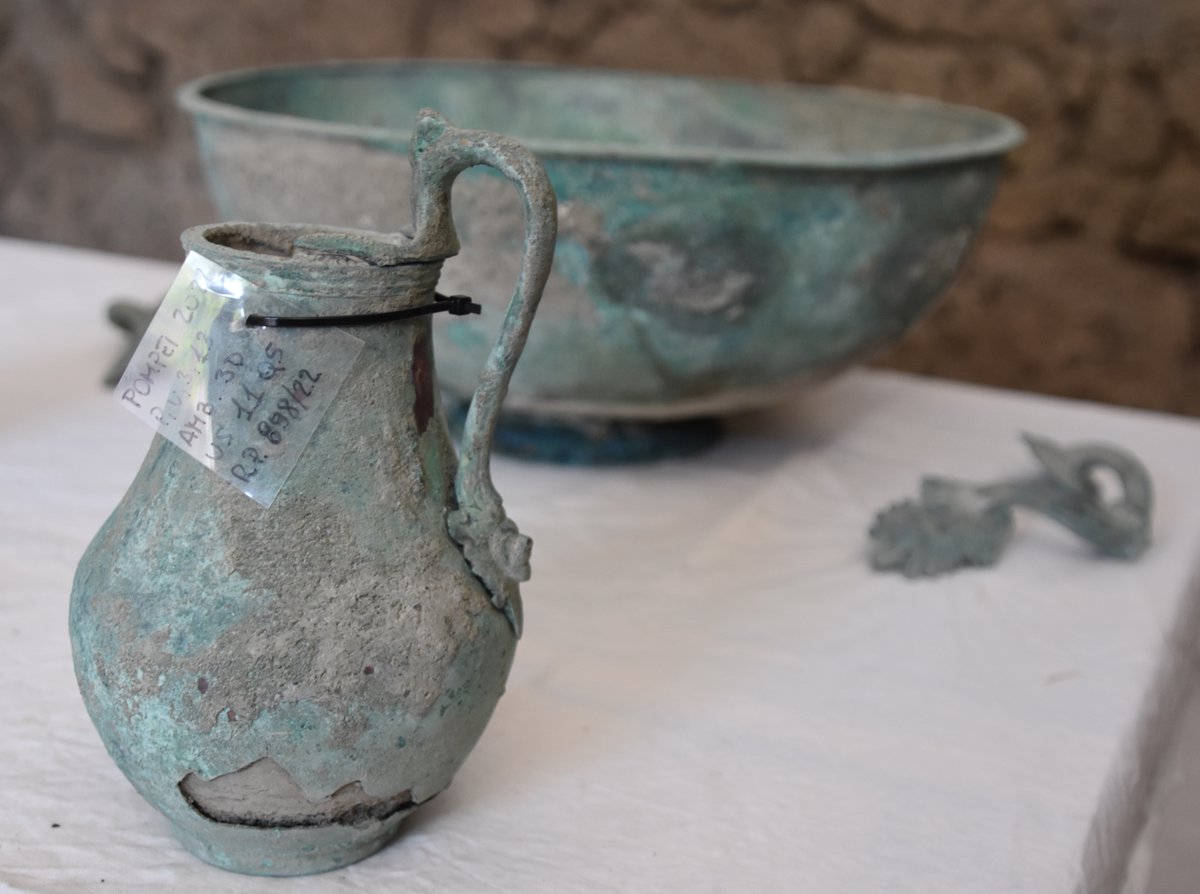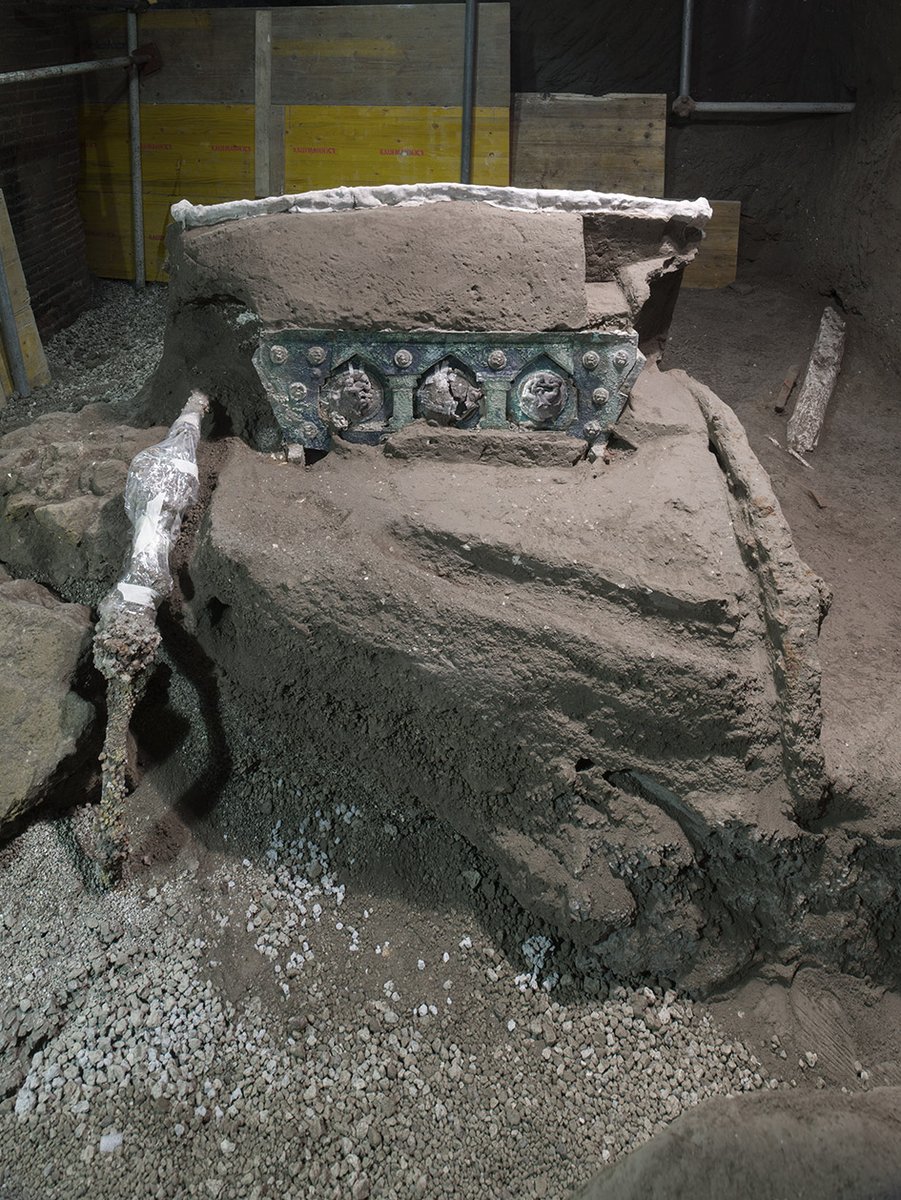New discovery: two skeletons found beneath a collapsed wall in #Pompeii.
Turmoil, confusion, attempted escapes and, in the meantime, an earthquake, showers of pumice, volcanic ash and hot gases.

Turmoil, confusion, attempted escapes and, in the meantime, an earthquake, showers of pumice, volcanic ash and hot gases.

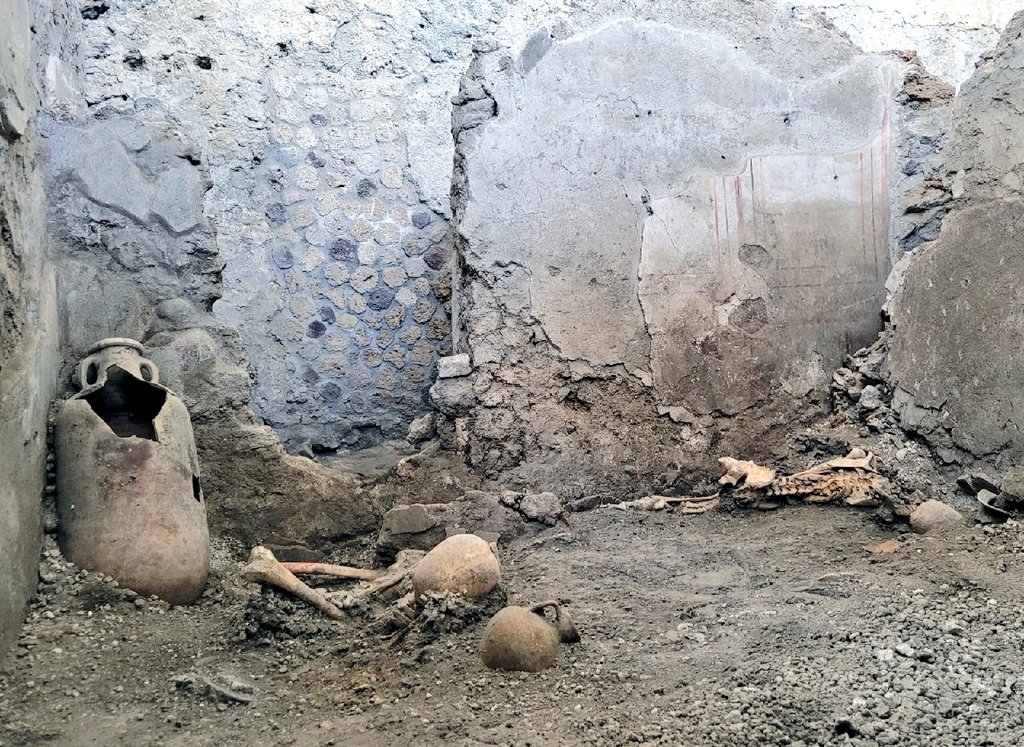
This was the inferno of the eruption of AD 79, the living hell in which the inhabitants of the ancient city of Pompeii found themselves, including the two victims whose skeletons were recently discovered during the excavation of the insula of the House of the Chaste Lovers. 



They were the victims of an earthquake that accompanied the eruption, discovered beneath a wall that had collapsed between the final phase of the deposition of pumice and prior to the arrival of the pyroclastic flows that buried Pompeii for good. 



They provide increasingly clear evidence that, during the eruption, it was not just the collapse of structures associated with the accumulation of pumice or the impact of pyroclastic flows that represented the only dangers to the lives of the inhabitants of ancient Pompeii. 







• • •
Missing some Tweet in this thread? You can try to
force a refresh

 Read on Twitter
Read on Twitter


